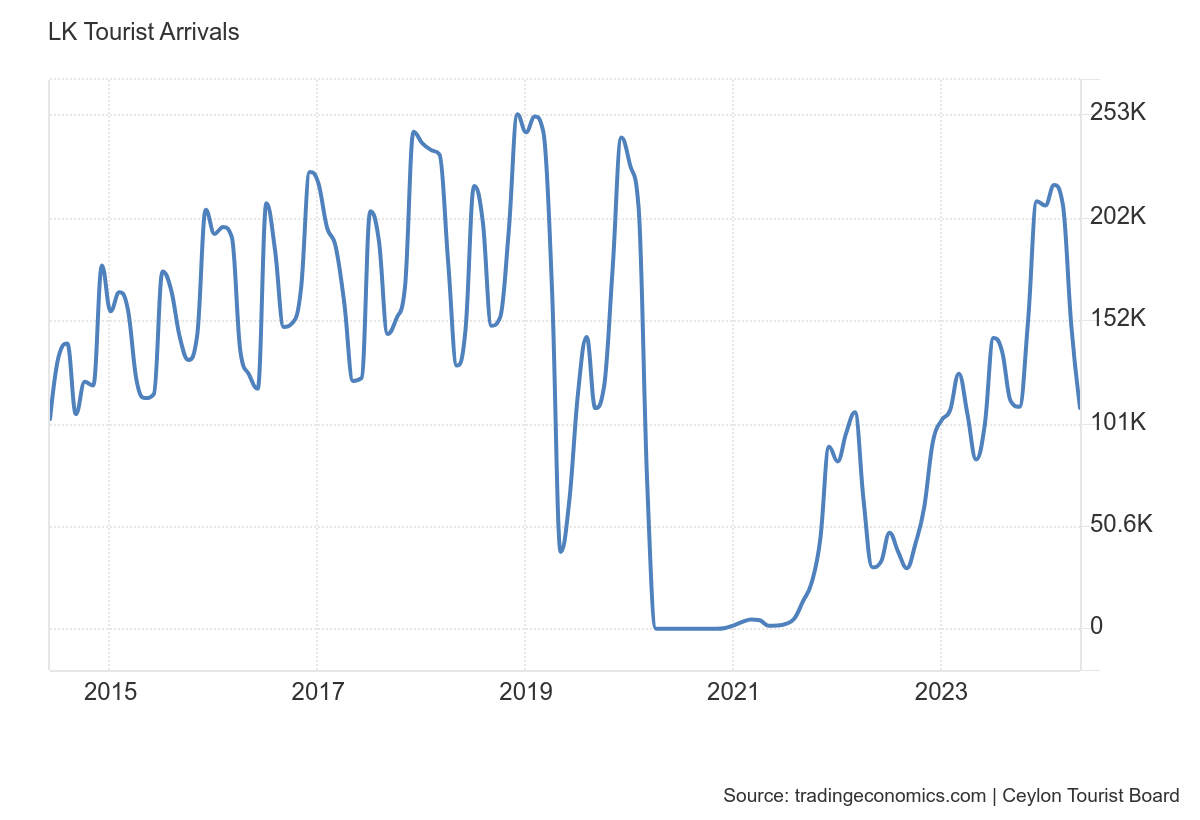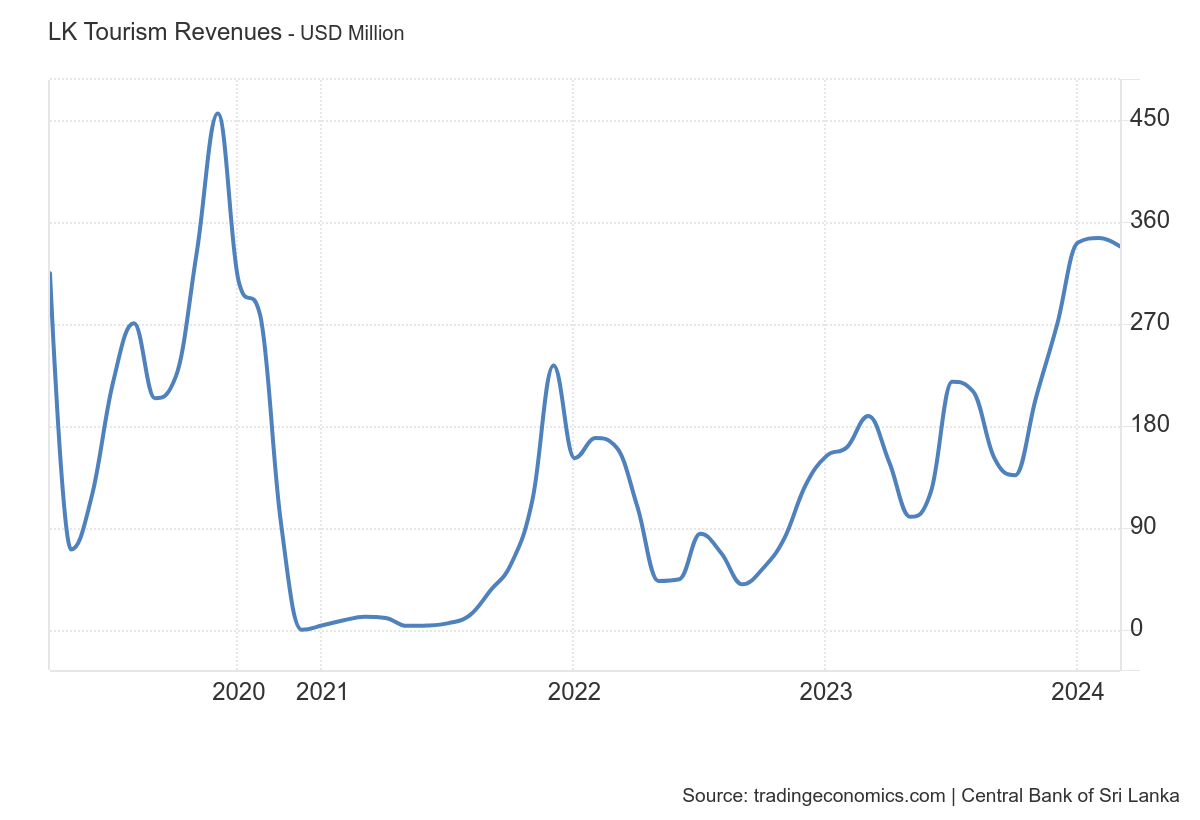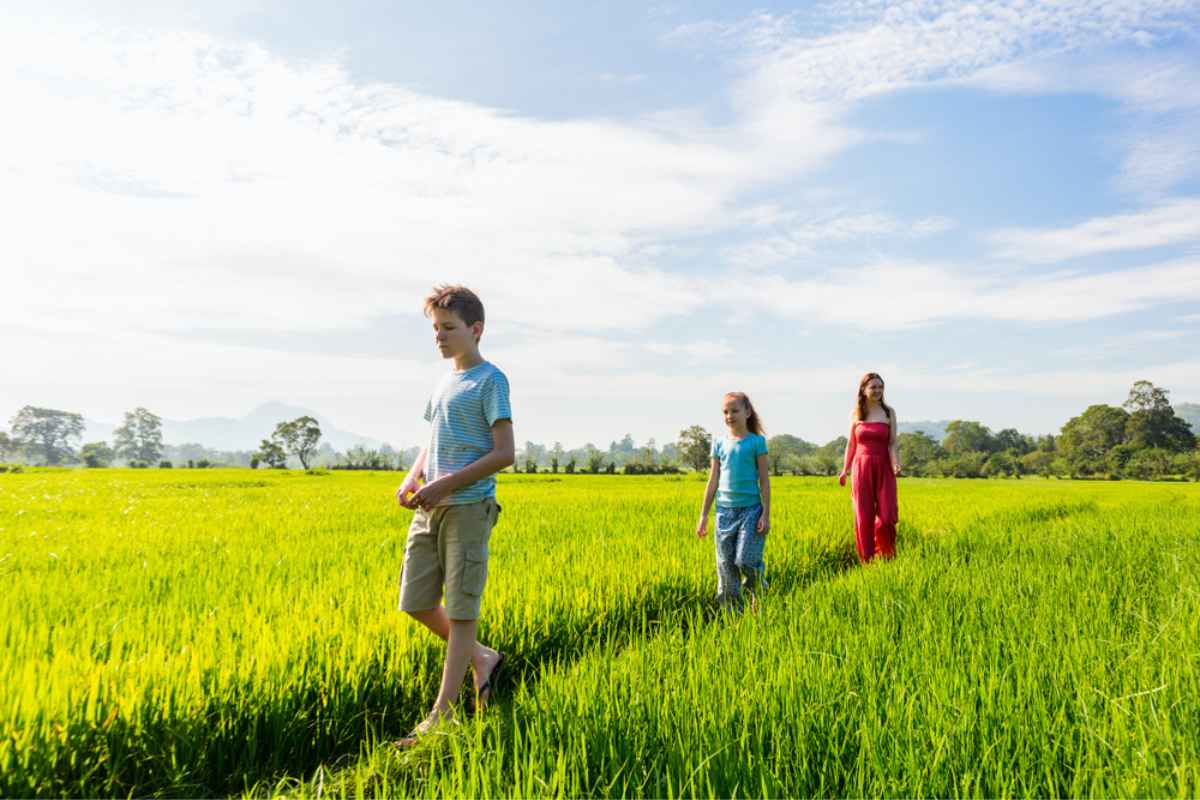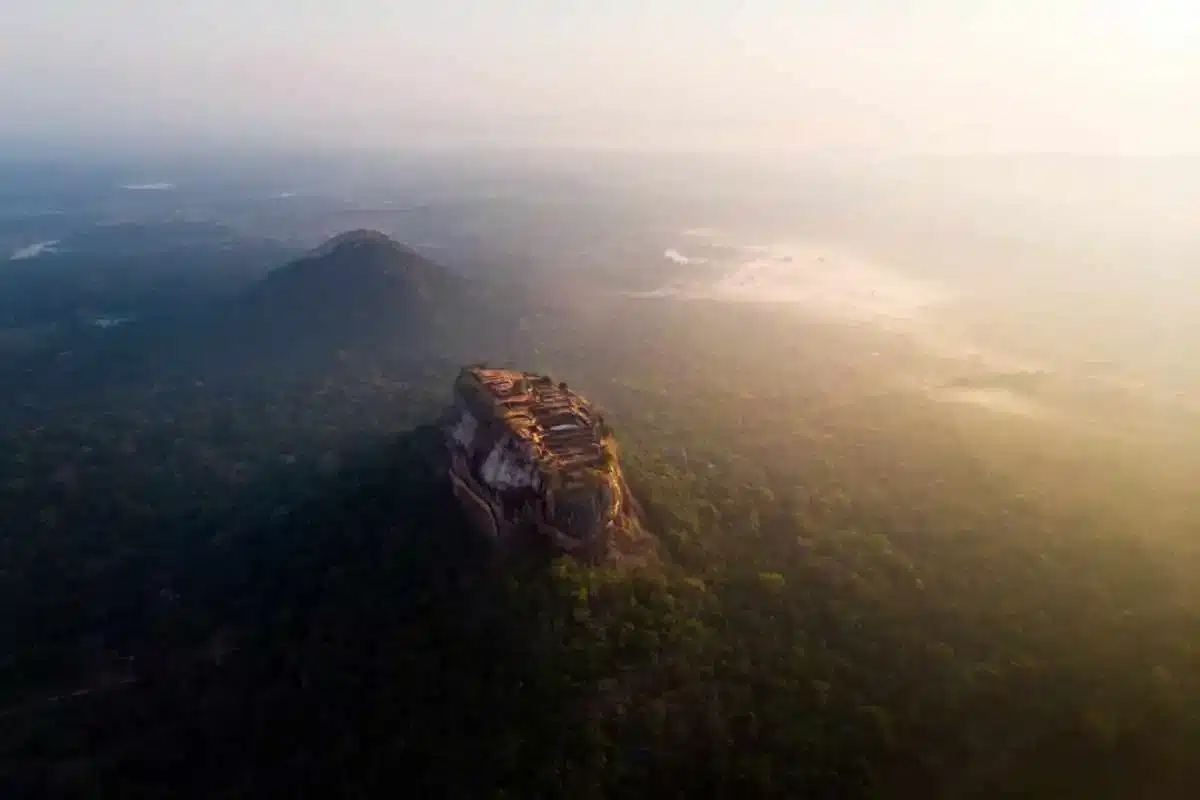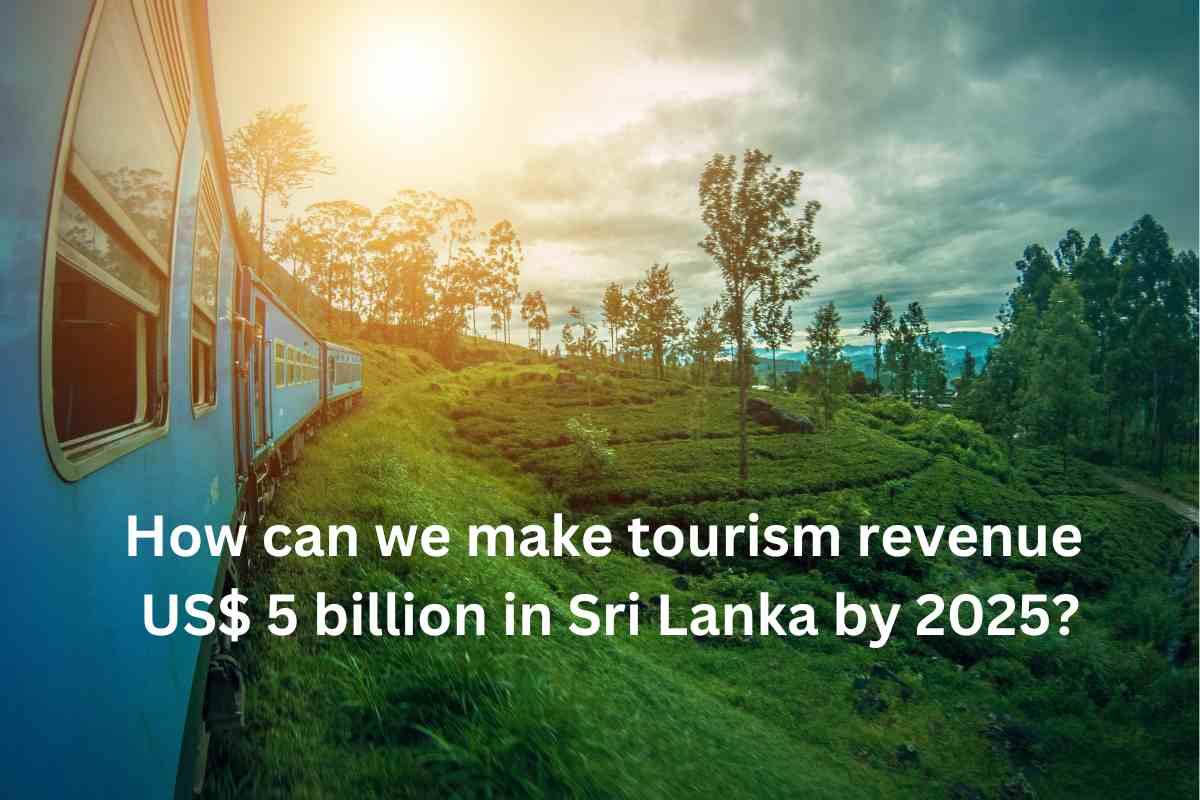
Blessed with stunning landscapes and rich cultural heritage, Sri Lanka holds immense potential to become a premier global tourist destination. Yet, despite its natural allure, the tourism industry in Sri Lanka faces several challenges that hinder its growth and economic contributions. With strategic planning and targeted initiatives, Sri Lanka can increase its tourism revenue to USD 5 billion by 2025.
Current State of Tourism in Sri Lanka
Overview of the Tourism Industry
The tourism sector in Sri Lanka has shown promising growth in recent years. In June 2024, foreign tourist arrivals reached 108,665, marking a 13.0% year-on-year increase. This growth underscores the country’s potential to attract a more significant number of international visitors. Key statistics reveal that the top tourist source markets include India, Russia, the UK, Germany, and China, with India contributing 25.2% of the total arrivals.
Major Tourist Source Markets
India remains Sri Lanka’s leading source market, followed by Russia, the UK, Germany, and China. Understanding the preferences and expectations of tourists from these countries is crucial for tailoring marketing and service strategies. For instance, while Indian tourists may seek cultural and heritage experiences, Russian tourists might be more inclined towards beach vacations and wellness tourism.
Challenges in the Tourism Sector
Impact of New Visa Regime
Introducing a new visa regime with higher fees on April 17th, 2024, led to a drop in tourist visits. However, amendments made later in the month helped mitigate some negative impacts. Ensuring a tourist-friendly visa policy is essential to maintain and increase tourist arrivals.
Discrepancy in Property Registrations
A significant gap exists between properties listed on Booking.com and those registered with the Sri Lanka Tourism Development Authority (SLTDA). Booking.com lists 12,846 properties with over 95,000 rooms, while SLTDA reports only 4,346 properties with 53,229. This discrepancy highlights the need for proper registration and taxation, which can enhance the economic benefits derived from tourism.
Tourism Leakage
Tourism leakage, where a substantial portion of tourism revenue leaves the country, is a critical issue for Sri Lanka. Over 60% of total tourism revenue is lost due to this leakage. Addressing this issue requires a concerted effort from the government and the private sector to promote local businesses and products, thereby retaining more revenue within the country.
Strategies for Boosting Tourism Revenue
Addressing Registration and Taxation
To tackle the registration and taxation discrepancy, it is essential to streamline the registration process and provide incentives for compliance. Ensuring all tourism-related properties are formally registered with SLTDA can significantly increase tax revenue. Moreover, simplifying registration and offering compliance benefits can encourage more property owners to register their establishments.
Integrating Individual Income
Many tourism employees, including guides, drivers, and hotel employees, operate outside the formal tax system. By implementing a simplified tax system for small-scale tourism operators and providing tax benefits, the government can encourage these individuals to comply and contribute to the national economy. This integration can significantly boost government revenue from the tourism sector.
Promoting Local Businesses
Promoting local businesses and encouraging tourists to spend on local goods and services is vital to reducing tourism leakage. Initiatives such as “Buy Local” campaigns and partnerships with local artisans can help retain more revenue within the country. Supporting local businesses boosts the economy and enriches the tourist experience by offering unique and authentic products.
Enhancing Tourist Attractions
Agro-Tourism
Agrotourism presents a unique opportunity to diversify Sri Lanka’s tourism offerings. The country can attract tourists interested in rural and sustainable tourism by promoting farm stays, agricultural tours, and farm-to-table dining experiences. Highlighting the beauty of Sri Lanka’s countryside and the richness of its agricultural heritage can create a niche market for agrotourism.
Ayurveda and Wellness Tourism
Sri Lanka is renowned for its traditional Ayurveda medicine and صحة practices. Promoting Ayurveda retreats, yoga sessions, and wellness centres can attract health-conscious tourists seeking relaxation and rejuvenation. This segment of tourism not only offers a unique experience but leverages the country’s rich heritage of natural healing.
رياضات المغامرة
Adventure sports such as تصفح, ركوب الامواج بالطائرة الورقية, الغوص, hiking, and trekking offer thrilling experiences for adventure enthusiasts. Sri Lanka’s diverse landscapes provide the perfect backdrop for these activities. Developing infrastructure for adventure sports and promoting them through targeted marketing campaigns can draw adrenaline-seeking tourists to the country.
Digital Marketing and Promotion
Enhancing Digital Marketing Efforts
Despite the increasing trend of online bookings, Sri Lanka’s tourism industry needs effective digital marketing strategies. Enhancing digital marketing efforts can significantly increase visibility and attract more tourists. Collaborating with regional authorities to create cohesive marketing campaigns can amplify Sri Lanka’s appeal as a travel destination. Utilising social media, influencers, and travel blogs can also reach a broader audience and drive tourist interest.
Seasonal Marketing Strategies
Adapting marketing strategies to different seasons can attract tourists during off-peak times. For example, promoting Sri Lanka as a winter getaway for European travellers can boost arrivals during their colder months. Simultaneously, it’s essential to recognise that winter in Australia and New Zealand differs from Europe. Effective digital marketing should target the right segments at the right time and place. Tailoring campaigns to highlight the country’s favourable weather and unique attractions throughout the year can help maintain a steady flow of tourists.
Segmentation and Personalisation
Understanding the preferences and expectations of different tourist segments is crucial for effective marketing. Sri Lanka can attract more tourists by identifying high-value travellers from various countries and tailoring marketing campaigns to their interests. For instance, Chinese travellers might be drawn to luxury shopping and cultural experiences, while UK travellers might prefer beach holidays and adventure sports.
Adapting to Sales Channel Changes: Offline and Online
Analyzing the data from Statista Market Insights reveals significant trends in the shift between offline and online sales channels in the tourism industry from 2017 to 2028. The graph shows a steady decline in offline channels and a corresponding rise in online channels, indicating a pivotal shift in how travellers book their trips.
Trends in Sales Channels
From 2017 to 2019, offline channels maintained a slight majority, accounting for around 54-50% of bookings. This balance began to shift in 2020, with online channels taking the lead at 53%. The trend continues, with online channels expected to dominate increasingly, reaching 75% by 2028. Conversely, offline channels are projected to drop to 25% in the same period.
Implications for Tourism Strategy
This data highlights the growing importance of online channels in the tourism industry. Travelers increasingly rely on digital platforms for convenience, real-time information, and competitive pricing. For tourism businesses in Sri Lanka, this shift underscores the necessity of enhancing their online presence to capture a larger market share.
Strategies for Adapting to the Shift
1. Enhancing Digital Presence: Tourism businesses must invest in robust, user-friendly websites and mobile apps that offer seamless booking experiences. Optimising these search engine and mobile device platforms will improve visibility and accessibility.
2. Leveraging Social Media and Influencers: Engaging with potential travellers through social media platforms and influencers can drive interest and bookings. Regularly updated content, interactive campaigns, and collaborations with travel influencers can enhance brand presence and attract diverse audiences.
3. Utilising Online Travel Agencies (OTAs): Listing services on popular OTAs like Booking.com, Expedia, and Airbnb can expand reach and attract international tourists. These platforms expose a global audience and facilitate trust through reviews and ratings.
4. Personalised Marketing: With the availability of data analytics, tourism businesses can personalise marketing efforts based on customer preferences and behaviour. Tailoring offers and communications to specific segments can increase engagement and conversion rates.
5. Offline Channel Optimization: While online channels are growing, maintaining an optimised offline presence is still important for reaching specific demographics. Providing exceptional service in physical offices, Information Centres, and travel agents can build trust and loyalty among travellers who prefer traditional booking methods.
ممارسات السياحة المستدامة
Environmental Conservation
Promoting eco-friendly tourism initiatives and encouraging sustainable practices can enhance Sri Lanka’s appeal as an eco-conscious destination. Initiatives such as beach clean-ups, wildlife conservation projects, and eco-friendly accommodations can attract environmentally conscious travellers. Emphasising sustainability in tourism marketing can also improve the country’s image and attract a growing eco-tourist segment.
Community Involvement
Engaging local communities in tourism development ensures that the benefits of tourism are widely distributed. Involving communities in decision-making processes and supporting community-based tourism initiatives can empower residents and create more inclusive tourism experiences. Community involvement also enhances the authenticity of the tourist experience, as visitors can interact with locals and learn about their culture and traditions.
Improving Tourism Infrastructure
Transportation and Connectivity
Enhancing transportation and connectivity is essential for improving the overall tourist experience. Investing in infrastructure such as roads, airports, and public transportation can make it easier for tourists to explore different parts of the country. Improving connectivity between major tourist destinations can also encourage tourists to visit multiple locations, increasing their overall spending.
الإقامة والمرافق
Increasing and upgrading hospitality options is crucial for accommodating a growing number of tourists. Encouraging investment in hotels, resorts, and other types of accommodation can ensure sufficient high-quality lodging options for visitors. Additionally, upgrading existing facilities to meet international standards can enhance tourists’ comfort and satisfaction.
Collaborations and Partnerships
Public-Private Partnerships
Public-private partnerships (PPPs) can play a significant role in tourism development. By leveraging the strengths and resources of both sectors, PPPs can drive innovation and investment in the tourism industry. Joint initiatives such as infrastructure development, marketing campaigns, and training programs can create a more robust and competitive tourism sector.
International Collaborations
Partnering with global tourism bodies and international organisations can enhance Sri Lanka’s visibility on the world stage. Collaborations with international tourism associations, travel agencies, and airlines can facilitate the exchange of knowledge, resources, and best practices. These partnerships can also help Sri Lanka tap into new markets and attract a diverse range of tourists.
رصد وتقييم
Setting Benchmarks and Goals
Establishing clear benchmarks and goals is essential for measuring progress and ensuring accountability. By setting specific targets for tourist arrivals, revenue, and other key performance indicators, Sri Lanka can track its progress towards USD 5 billion in tourism revenue by 2025. Regular performance reviews and strategy adjustments can ensure the country stays on track to achieve its objectives.
Regular Performance Reviews
Conducting regular performance reviews helps identify strengths and areas for improvement. Stakeholders can make informed decisions and implement necessary changes by analysing tourist arrivals, spending patterns, and satisfaction levels. Continuous monitoring and evaluation ensure the tourism industry remains dynamic and responsive to changing market conditions.
أسئلة وأجوبة
What are the main tourist attractions in Sri Lanka?
Sri Lanka offers diverse attractions, including stunning beaches, ancient temples, wildlife sanctuaries, and scenic landscapes. Popular destinations include Sigiriya, Kandy, Galle, Ella, and Yala National Park.
How can Sri Lanka attract more international tourists?
Enhancing digital marketing efforts, promoting unique attractions such as Ayurveda and adventure sports, and improving infrastructure can help attract more international tourists. Tailoring marketing campaigns to different segments and seasons can also boost arrivals.
What is tourism leakage, and how can it be reduced?
Tourism leakage refers to the portion of tourism revenue that leaves the country. It can be reduced by promoting local businesses, encouraging tourists to spend on local goods and services, and supporting community-based tourism initiatives.
Why is registration and taxation necessary for the tourism industry?
Proper registration and taxation ensure that all tourism-related properties and individuals contribute to the national economy. Streamlining the registration process and providing incentives for compliance can increase tax revenue and support industry growth.
How can Sri Lanka promote sustainable tourism?
Promoting eco-friendly tourism initiatives, encouraging sustainable practices, and involving local communities in tourism development can enhance Sri Lanka’s appeal as a sustainable destination. Emphasising environmental conservation and cultural preservation can attract eco-conscious travellers.
What role do public-private partnerships play in tourism development?
Public-private partnerships can drive innovation and investment in the tourism industry. By leveraging the strengths and resources of both sectors, PPPs can enhance infrastructure, marketing, and training efforts, creating a more robust and competitive tourism sector.
Sri Lanka has the potential to transform its tourism industry and achieve USD 5 billion in revenue by 2025. The country can attract more tourists and maximise economic benefits by addressing challenges such as registration discrepancies, tourism leakage, inadequate marketing, promoting sustainable practices, and enhancing infrastructure. Through strategic planning, collaboration, and continuous improvement, Sri Lanka can become a top global travel destination.

شاريث راتناياكي
Co-Founder - Sri Lanka Travel Pages

